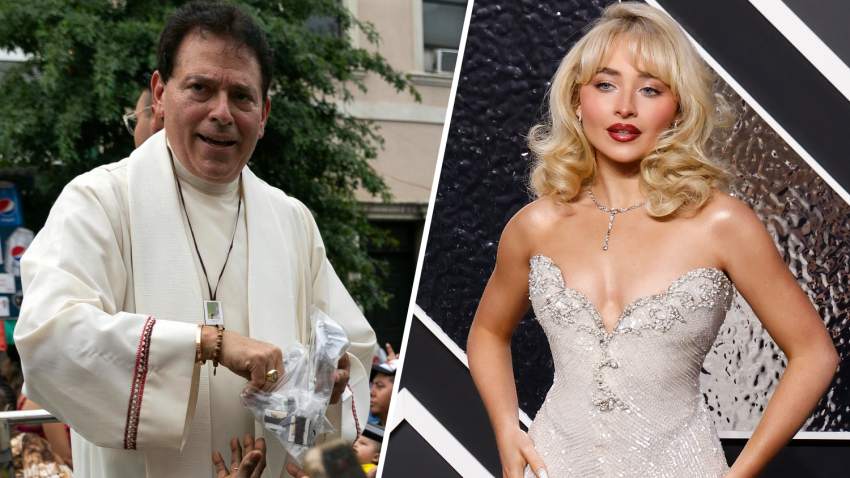Priest replaced after Sabrina Carpenter shoots music video in his church
3 min read
A New York priest has been removed from his duties after controversy surrounding his approval of a pop star’s music video filmed inside his church. Monsignor Jamie Gigantiello, who allowed Sabrina Carpenter to shoot provocative scenes for her music video “Feather” at the Our Lady of Mount Carmel Church, was stripped of his pastoral and administrative responsibilities. This decision followed an investigation by the Roman Catholic Diocese of Brooklyn, which uncovered multiple instances of mismanagement beyond the filming incident.
The controversy began after Carpenter’s music video, released in October 2023, featured provocative images filmed within the church. Among the most criticized scenes were a crucifix adorned with profanity and Carpenter dancing on the altar in a short black dress. The church’s officials expressed their dismay, calling the video “appalling” and stating that proper procedures for filming inside the church had not been followed.
In the aftermath, Monsignor Gigantiello faced intense scrutiny for his role in permitting the shoot. In a letter to parishioners, Gigantiello described the decision as a “lapse in judgment,” but he did not address the broader allegations of misconduct. In November 2023, shortly after the backlash from Carpenter’s video, Gigantiello’s administrative duties were revoked. He was also relieved of his fundraising role within the diocese.
The investigation into Gigantiello’s conduct revealed even more serious issues. Bishop Robert Brennan, who heads the Diocese of Brooklyn, announced that the inquiry uncovered violations of diocesan policies and protocols beyond the church filming incident. Specifically, it was revealed that Gigantiello had used diocesan funds improperly, including using a church credit card for personal expenses. Furthermore, between 2019 and 2021, Gigantiello transferred nearly $2 million of church funds to bank accounts linked to a former staff member of New York City Mayor Eric Adams. The transfers are being investigated in connection to broader concerns involving the mayor’s office, which has been under scrutiny following a corruption indictment of Mayor Adams in September 2023.
Mayor Adams faces multiple criminal charges, including bribery and wire fraud, as well as accusations of soliciting illegal foreign campaign donations. These investigations have led to a series of subpoenas, law enforcement raids, and resignations from top officials within the city’s administration. The links between Gigantiello and individuals connected to Adams have intensified the focus on the priest’s conduct and his role within the diocese.
In response to the findings, the Diocese of Brooklyn took immediate action, removing Gigantiello from all positions of authority and replacing him with a new leader. The diocese’s statement outlined the seriousness of the situation, noting that the investigations conducted by Alvarez & Marsal and Sullivan & Cromwell LLP had exposed serious violations of diocesan protocols.
Bishop Brennan expressed his sorrow over the situation, emphasizing the need for accountability and transparency in the church. He noted that the diocese was committed to addressing these issues thoroughly and would take necessary steps to ensure such breaches would not occur again.
As of now, Monsignor Gigantiello has not publicly responded to the accusations that led to his dismissal. The church’s handling of the situation has sparked debate, with some criticizing the oversight of the church’s leadership while others believe the action taken was appropriate given the gravity of the violations.
The controversy has also drawn attention to the wider issue of how religious institutions manage their resources and the potential conflicts of interest that can arise when personal relationships and financial dealings intersect with religious duties. In particular, the involvement of Gigantiello with individuals connected to Mayor Adams’ administration has raised concerns about the transparency of financial transactions within the church.
While the removal of Monsignor Gigantiello is seen as a necessary step in addressing the allegations, it also highlights broader challenges facing the Catholic Church as it grapples with maintaining ethical standards in an increasingly complex and scrutinized environment. The church’s response to the situation will likely continue to be closely watched, as both local parishioners and the public await further developments.







